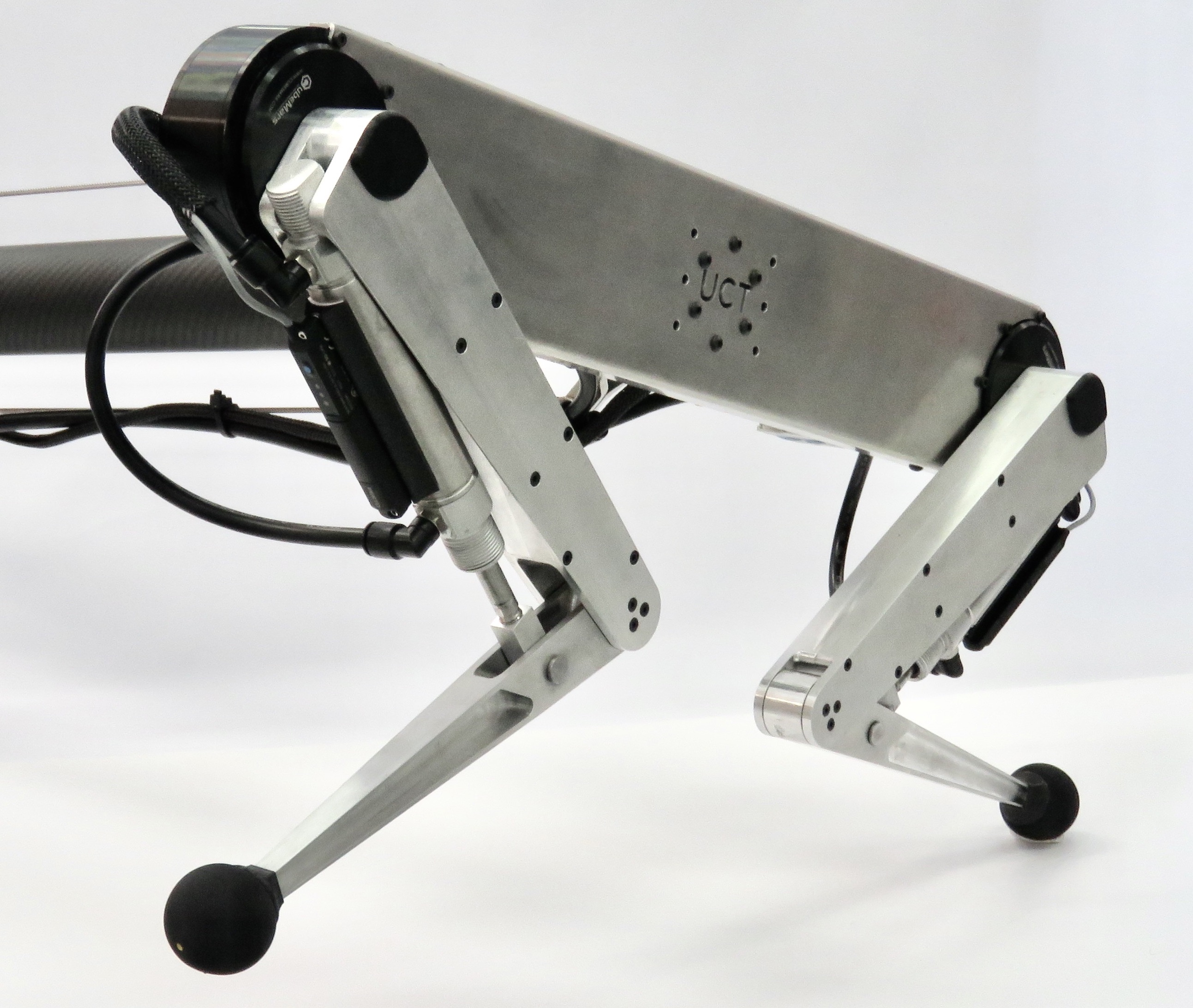publications
My conference publications
2023
-
 Getting Air: Modelling and Control of a Hybrid Pneumatic-Electric Legged RobotChristopher Mailer, Stacey Shield, Reuben Govender, and Amir PatelIn 2023 IEEE International Conference on Robotics and Automation (ICRA), 2023
Getting Air: Modelling and Control of a Hybrid Pneumatic-Electric Legged RobotChristopher Mailer, Stacey Shield, Reuben Govender, and Amir PatelIn 2023 IEEE International Conference on Robotics and Automation (ICRA), 2023With their combination of power and compliance, pneumatic actuators have great potential for enabling dynamic and agile behaviors in legged robots, but their complex dynam- ics impose control challenges that have hindered widespread use. In this paper, we describe the development of a tractable model and characterization procedure of an off-the-shelf double acting pneumatic cylinder controlled by on/off solenoid valves for use in trajectory optimization. With this we are able to generate motions which incorporate both the body and actuator dynamics of our robot Kemba: a novel quadrupedal robot prototype with a combination of electric and pneumatic actu- ators. We demonstrate both a 0.5 m jump and land maneuver, and a maximal 1m jump, approximately 2.2 times its leg length, on the physical hardware with the proposed model and approach. The hardware matches the desired trajectory with a maximum height error of only 5cm without any feedback on the pneumatic joints, demonstrating the utility of the model in high-level motion generation, and capability of the physical robot.
@inproceedings{mailer2023, author = {Mailer, Christopher and Shield, Stacey and Govender, Reuben and Patel, Amir}, booktitle = {2023 IEEE International Conference on Robotics and Automation (ICRA)}, title = {Getting Air: Modelling and Control of a Hybrid Pneumatic-Electric Legged Robot}, year = {2023}, location = {London, UK}, volume = {}, number = {}, pages = {9973-9979}, url = {https://ieeexplore.ieee.org/document/10160737}, doi = {10.1109/ICRA48891.2023.10160737}, }
2021
-
 Evolving Gaits for Damage Control in a Hexapod RobotChristopher Mailer, Geoff Nitschke, and Leanne RawIn Proceedings of the Genetic and Evolutionary Computation Conference (GECCO), 2021
Evolving Gaits for Damage Control in a Hexapod RobotChristopher Mailer, Geoff Nitschke, and Leanne RawIn Proceedings of the Genetic and Evolutionary Computation Conference (GECCO), 2021Autonomous robots are increasingly used in remote and hazardous environments, where damage to sensory-actuator systems cannot be easily repaired. Such robots must therefore have controllers that continue to function effectively given unexpected malfunctions and damage to robot morphology. This study applies the Intelligent Trial and Error (IT&E) algorithm to adapt hexapod robot control to various leg failures and demonstrates the IT&E map-size parameter as a critical parameter in influencing IT&E adaptive task performance. We evaluate robot adaptation for multiple leg failures on two different map-sizes in simulation and validate evolved controllers on a physical hexapod robot. Results demonstrate a trade-off between adapted gait speed and adaptation duration, dependent on adaptation task complexity (leg damage incurred), where map-size is crucial for generating behavioural diversity required for adaptation.
@inproceedings{mailer2021, author = {Mailer, Christopher and Nitschke, Geoff and Raw, Leanne}, title = {Evolving Gaits for Damage Control in a Hexapod Robot}, year = {2021}, publisher = {Association for Computing Machinery}, address = {New York, NY, USA}, url = {https://doi.org/10.1145/3449639.3459271}, doi = {10.1145/3449639.3459271}, booktitle = {Proceedings of the Genetic and Evolutionary Computation Conference (GECCO)}, pages = {146–153}, numpages = {8}, keywords = {behavioural diversity, bayesian optimisation, damage recovery, evolutionary robotics, quality-diversity algorithms}, location = {Lille, France}, series = {GECCO '21}, }